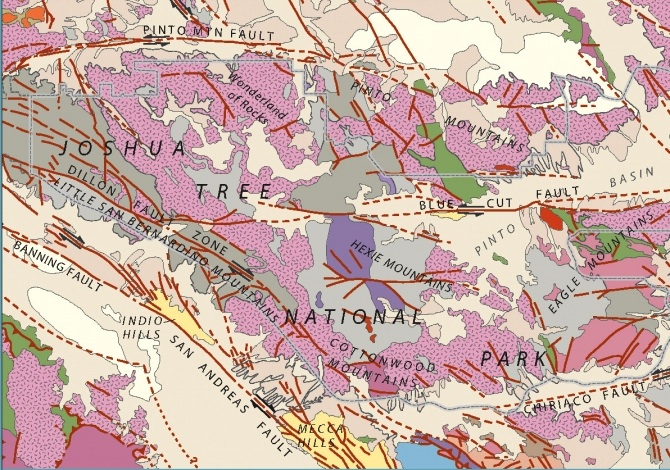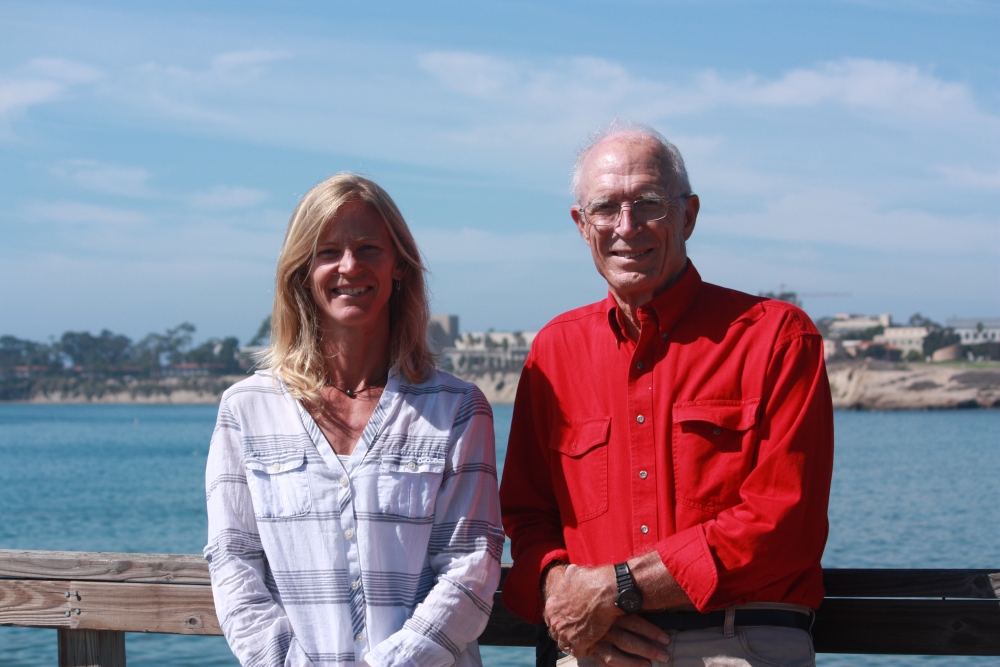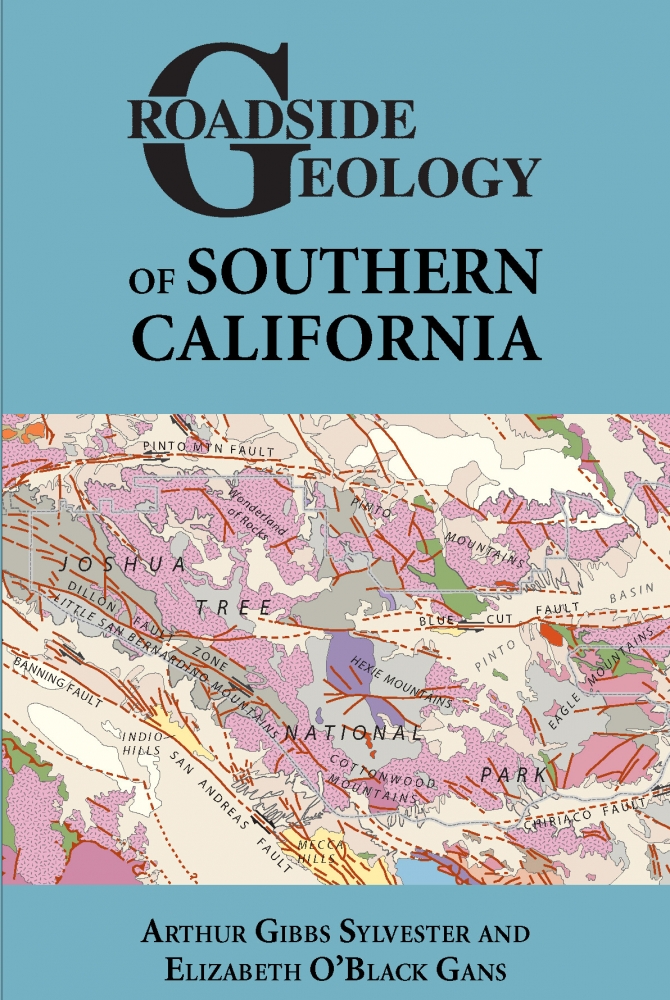
Geology 101


Drive eight hours in any direction in Southern California and you’ll get a lesson in geology by way of landscape. Desert erosion, glaciation, volcanism, prehistoric landslides and active earthquake faults abound along the region’s highways and byways.
But you have to know what you’re looking for. A new book by UC Santa Barbara geologist Arthur Sylvester and illustrator Elizabeth O’Black Gans, an alumna, aims to help.
The pair spent three years creating “Roadside Geology of Southern California,” the latest in a series of highway guides from Mountain Press Publishing Co. The first, “Roadside Geology of Northern California,” was published in 1972.
With 196 geo-referenced color photographs, 84 detailed maps and 31 explanatory diagrams, the 400 pages of “Roadside Geology of Southern California” combine the latest science with accessible stories about the rocks and landscapes visible from winding two-lane byways as well as from the region’s vast network of highways.
“The hard part — besides driving 13,000 miles — was deciding what had to be omitted from our book,” said Sylvester, a professor emeritus in the Department of Earth Science. “Southern California is chock full of geological treasures.”
The text reviews the complex geology and geologic history of the region’s notable features such as the San Andreas Fault, the Salton Sea, the boulder piles in Joshua Tree National Park, the brilliant white dunes of the Northern Channel Islands and the youthful volcanic cinder cones in the Mojave Desert. It also explains why the Transverse Ranges — which include the Santa Ynez Mountains behind Santa Barbara and the San Gabriel and San Bernardino Mountains that border the Los Angeles Basin — trend east to west rather than northwest like the majority of mountains in California and North America.
“Our book details how these ranges rotated over time as part of the shearing movement between the North American and the Pacific plates,” Sylvester explained. “The Transverse Ranges started out as coastline near San Diego and over millions of years spun clockwise almost like a log in an eddy.”
Southern California also features almost every age of rock, from 2.5-billion-year-old metamorphic rocks to 3,000-year-old volcanic cinders. Sylvester also noted that the range of rock types is mind-boggling. The region includes high-grade metamorphic, plutonic and volcanic rocks, common sandstone and limestone, soupy sediments yet to harden into rock, precious gemstones and giant quarries of sand and gravel.
Sylvester has two favorite geologic roads: State Route 2 across the San Gabriel Mountains and State Route 33 over the Santa Ynez Mountains. “These are really interesting byways over the crests of two major mountain ranges,” he said. “They offer a driving experience along curvy but well-maintained two-lane roads. You can see spectacular geology as well as a lot of scenery unlike the sound walls and monotonous landscaping along most Southern California freeways.”
While Sylvester considers those state routes the most fun to drive, he says Highway 101 along the coast between Ventura and Santa Barbara is one of the most scenic drives in Southern California. “The book directs your attention from the sea and the Channel Islands to must-see geologic features in the cliffs that might not be apparent at 65 mph,” he said.
Sylvester noted two places offering more leisurely drives near the Salton Sea that cover a lot of geologic features in one day. “I love the drive up Split Mountain Gorge, south of California 78 in the southwest corner of the Salton Trough,” he said. “Its towering cliffs bear clear evidence of a huge landslide that crashed into soft sediments and folded them into fantastic contortions.”
On the north edge of the Salton Sea, the Mecca Hills area has colorful sedimentary rocks folded and faulted within the San Andreas Fault zone. “In contrast to freeways, you can park anywhere along these winding roads to admire and study the geology,” Sylvester said. “And in both places, the exposures are almost 100 percent, so the spectacular geology is easily seen.”
Sylvester will sign copies of “Roadside Geology of Southern California” at Chaucer’s Bookstore at 3321 State St. in Santa Barbara on Tuesday, March 8, at 7 p.m.



